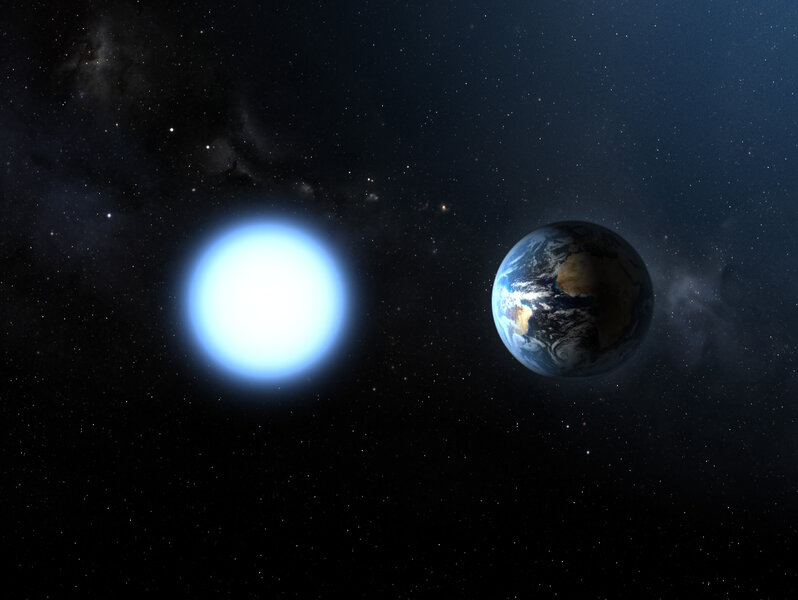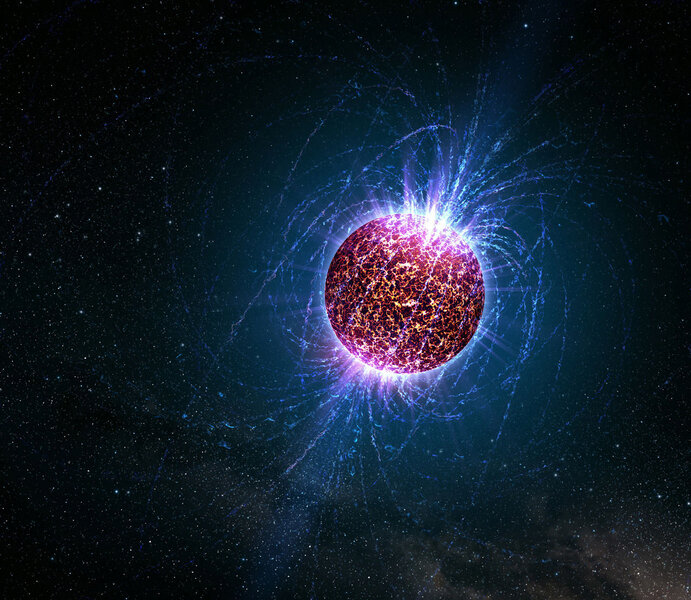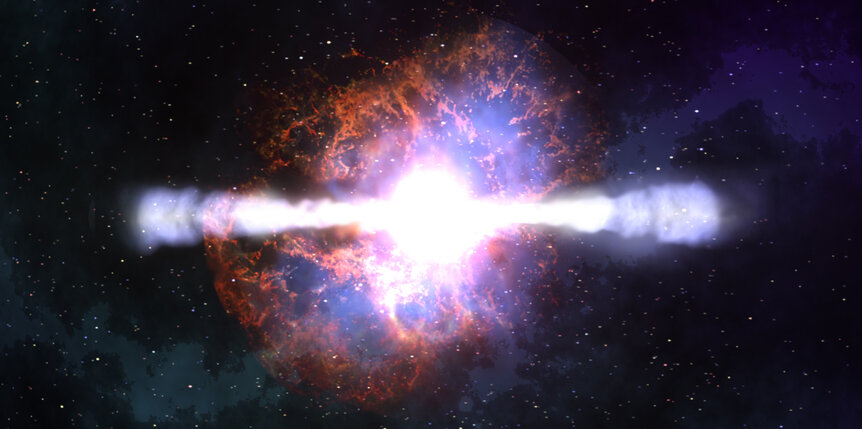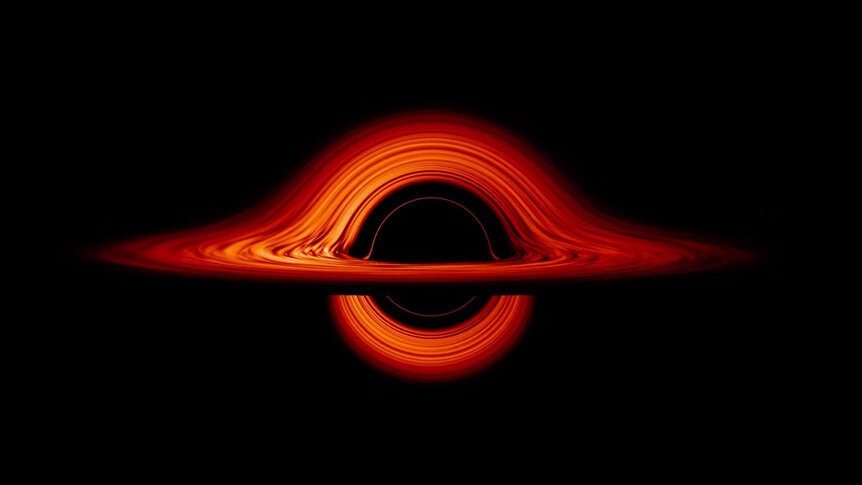Create a free profile to get unlimited access to exclusive videos, sweepstakes, and more!
Black dwarf supernovae: The last explosions in the Universe
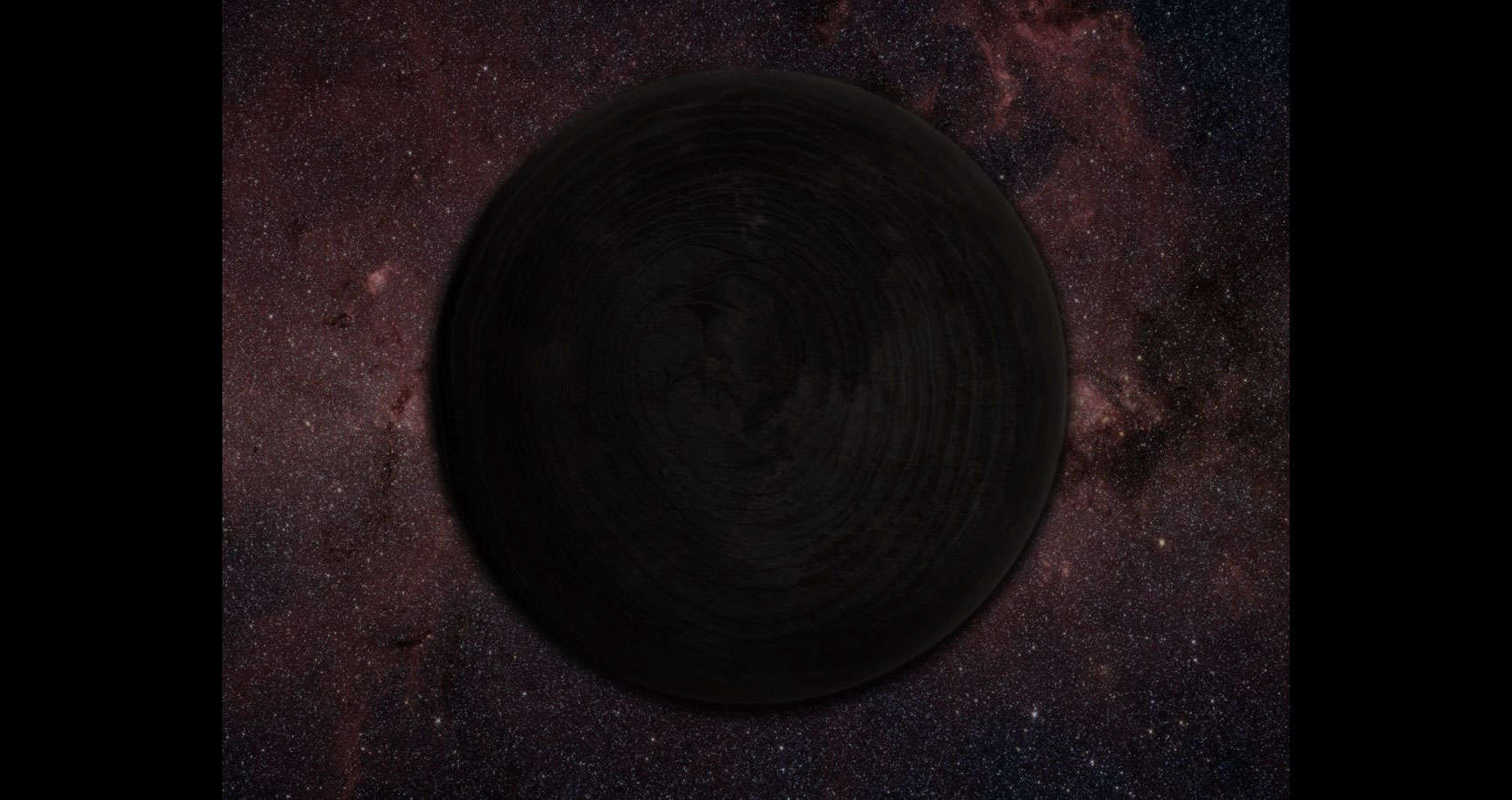
Here's a happy thought: The Universe may end in a whimper and a bang. A lot of bangs.
Calculations done by an astrophysicist indicate that in the far future, the Universe will have sextillions of objects called black dwarfs, and that eventually they can explode like supernovae. In fact, they may represent the very last things the Universe can do.
But this won't happen for a long time. A very, very, very long time*. So long from now I'm having difficulty figuring out how to explain how long it'll be. I'll get to it — your brain will be stomped flat by it, I promise — but we need to talk a bit first about stars, and nuclear fusion, and matter.
Stars like the Sun release energy as they fuse hydrogen atoms into helium atoms in their cores. It's very much like the way a hydrogen bomb works, but on a massively larger scale; the Sun outputs about the equivalent energy of one hundred billion one-megaton bombs. Every second.
Eventually the hydrogen runs out. A lot of complicated things can happen then depending on how massive the star is, what's in it, and more. But for stars up to about 8 – 10 times the mass of the Sun the outer layers all blow away, exposing the core to space; a core that has become a ball of material so compressed weird quantum mechanics rules come into play. It's still made up of atomic nuclei (like oxygen, magnesium, neon, and such) and electrons, but they're under incredible pressures, with the nuclei practically touching. We call such a material degenerate matter, and the object itself is called a white dwarf.
For stars like this, that's pretty much the end of the road. The kind of fusion process they enjoyed for billions of years — thermonuclear fusion, where (hugely simplified) the atomic nuclei are so hot they slam into each other and fuse — can't work any more. The white dwarf is born very hot, hundreds of thousands of degrees Celsius, but without an ongoing heat source it begins to cool.
That process takes billions of years. White dwarfs that formed in the early Universe are just now cool enough to be red hot, around 4,000° C.
But the Universe is young, only about 14 billion years old. Over very long periods of time, those white dwarfs will cool further. Eventually, they'll cool all the way down to just about absolute zero: -273°C. That will take trillions of years, if not quadrillions. Much much longer than the Universe has already existed.
But at that point the degenerate matter objects won't emit any light. They'll be dark, which is why we call them black dwarfs.
So is that it? Just black dwarfs sitting out there, frozen, forever?
Well, maybe not, and this is where things start to get weird (yes, I know, they're already weird, but just you wait a few paragraphs). Currently, physicists think that protons, one of the most basic of subatomic particles, can decay spontaneously. On average this takes a very long time. Experimental evidence has shown that the proton half-life may be at least 1034 years. That's a trillion trillion times longer than the current age of the Universe.
If true, that means that the protons inside the atomic nuclei in the black dwarfs will decay. If they do, then after some amount of time, 1035 or more years, the black dwarfs will… evaporate. Poof. Gone. At that point all that will be left are even denser neutron stars and black holes.
But proton decay, while predicted by current particle theory, hasn't yet been observed. What if protons don't decay? What happens to black dwarfs then?
That's where this new paper comes in. It turns out that there are other quantum mechanics effects that become important, like tunneling. Atomic nuclei are loaded with protons, which have a positive charge, so the nuclei repel each other. But they are very close together in the center of the black dwarf. Quantum mechanics says that particles can suddenly jump in space very small distances (that's the tunneling part, and of course it's far more complicated than my overly simple synopsis here), and if one nucleus jumps close enough to another, kablam! They fuse, form a heavier element nucleus, and release energy.
This is different than thermonuclear fusion, which needs lots of heat. This kind doesn't need heat at all, but it does need really high density, so it's called pycnonuclear fusion (pycno in ancient Greek means dense).
Over time, the nuclei inside the black dwarf fuse, very very slowly. The heat released is minimal, but the overall effect is that they get even denser. Also, like in normal stars, the nuclei that fuse create heavier nuclei, up to iron.
That's a problem. The effects holding the star up against its own intense gravity is degeneracy pressure between electrons. When you try to fuse iron it eats up electrons. If enough iron fuses the electrons go away, the support for the object goes with it, and it collapses.
This happens with normal stars too. They have to be pretty massive, more than 8–10 times the mass of the Sun (so the core is at least 1.5 or so times the Sun's mass). But for stars like those the core suddenly collapses, the nuclei smash together and form a ball of neutrons, what we call a neutron star. This also releases a lot of energy, creating a supernova.
This will happen with black dwarfs too! When enough iron builds up, they too will collapse and explode, leaving behind a neutron star.
But pycnonuclear fusion is an agonizingly slow process. How long will that take before the sudden collapse and kablooie?
Yeah, I promised earlier that I'd explain this number. For the highest mass black dwarfs, which will collapse first, the average amount of time it takes is, well, 101,100 years.
That's 10 to the 1,100th power. Written out, it's a 1 followed by eleven hundred zeroes.
I… I don't have any analogies for how long that is. It's too huge a number to even have any kind of rational meaning to the pathetic globs of meat in or skulls.
I mean, seriously, here it is written out:
That's a lot of zeroes. Feel free to make sure I got the number right.
I tried to break it down into smaller units that make sense, but c'mon. One of the largest numbers we named is a googol, which is 10100, a one followed by 100 zeroes.
The number above is a googol11, a googol to the 11th power.
<sound of me running around in circles and making mewling noises>
And that's the black dwarfs that go first. The lowest mass ones take much longer.
How much longer? I'm not terribly glad you asked. They collapse after about 1032,000 years.
That's not a typo. It's ten to the thirty-two-thousandth power. A one with 32,000 zeroes after it.
OK then.
I'll note that this is for stars that start out more massive than the Sun. Stars like ours aren't massive enough to get the pycnonuclear fusion going — they don't have enough mass to squeeze the core into the density needed for it — so when they turn into black dwarfs, that's pretty much it. After that, nothing.
Assuming protons don't decay, I'll note again. They probably do, so perhaps this is all just playing with physics without an actual outcome we can see (not that we'll be around to anyway). Or maybe we're wrong about protons, and in that unimaginably distant future the Universe will consists of neutron stars, black holes, low mass black dwarfs like the Sun, and something like a sextillion black dwarfs that will one day collapse and explode.
Black holes, I'll note, evaporate as well, and the last of those should go in less than a googol years. If so, then black dwarf supernovae may be the last energetic events the Universe can muster. After that, nothing. Heat death. Infinite cold for infinite time.
Oh hey, it gets worse. The Universe is expanding, but the part of it that we can see, the observable Universe, is actually shrinking. This has to do with dark energy and the accelerated expansion of the Universe, which I have explained elsewhere. But by the time the black dwarfs start to explode, the Universe we can see will have shrunk to the size of our own galaxy. Well, what's left of it by then. Odds are the black dwarfs will be scattered so far by then that we there won't even be one in our observable frame.
That's a rip-off. You'd think that waiting that long would have some payoff.
So why go through the motions to calculate all this? I actually think it's a good idea. For one thing, science is never wasted. It's possible this may all be right.
Also, the act of doing the calculation could yield interesting side results, things that have implications for the here-and-now that might be observable (like the decay of protons). There could be some tangible benefit.
But really, for my money, this act of spectacular imagination is what science is all about. Push the limits! Exceed the boundaries! Ask, "What's next? What happens after?" This expands our borders, pushes back at our limitations, and frees the brain — within the limits of the known physics and math — to pursue avenues otherwise undiscovered.
Seeking the truth can be a tough road, but it does lead to understanding, and there's beauty in that.
*That links to an article written by my SYFY WIRE colleague Jeff Spry about this topic when it first came out a while back. He gives a good summation of it, but after reading the paper myself I wanted to do a deeper dive. And, to be honest, I could write an article three times this long on this topic. There's a lot going on here.
